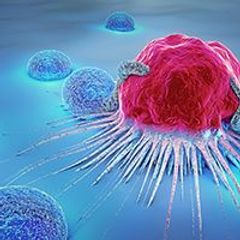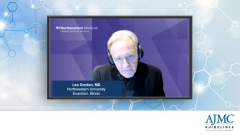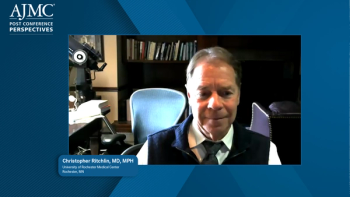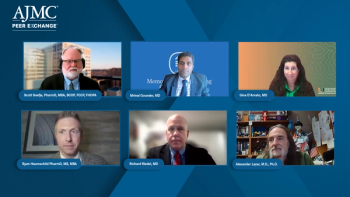
Navigating DLBCL Treatment Strategies for Patients Experiencing Resistance to Therapy
In his closing thoughts, Dr Gordon discusses navigation of treatment resistance in DLBCL management.
Episodes in this series

Leo Gordon, MD: People who are febrile who have low white [blood cell] counts are at risk for infection. They should be treated, I think, as though they have infection. The guidelines say that with antibiotics and almost always with an admission that if they’re febrile and have a neutrophil count less than 500 [per mL], then certainly. For severe infections we look for pneumonia or urinary tract infections or bacteremia and those patients are usually treated with IV [intravenous] antibiotics if they’re neutropenic. I have used Bactrim and acyclovir and sometimes fluconazole as a prophylaxis in patients with DLBCL [diffuse large B-cell lymphoma[ getting chemotherapy to try and mitigate opportunistic infections in the lung like PJP [Pneumocystis jiroveci pneumonia] and also herpes simplex infections in the mouth. I think that’s in the guidelines as an option. Not everybody does that, but I think especially with big doses of steroids that it’s important to do. I don’t tend to use growth factor in everybody. I don’t tend to use prophylactic antibacterial antibiotics like Levaquin or something of that sort. I think that the guidelines do a pretty good job of summarizing that approach.
I think with treatment resistance or progression we have subjective ways just at the bedside where you can see if someone isn’t doing well, if they’re losing weight. The physical exam shows the lymph nodes having decreased or increased. [We evaluate using] either CT or PET scan. We tend to use PET scan as a measure of response and complete response, but not for surveillance. We tend to use CT scans for surveillance after treatment. Treatment resistance means the disease hasn’t completely gone away. In large-cell lymphoma, we’re not really very satisfied with a partial response. When we think about curative, curable malignancies, large-cell lymphoma, Hodgkin lymphoma, we’re looking for a complete response, and we’re looking for a complete metabolic response with PET scan. The PET scans aren’t perfect, and sometimes we can’t tell whether it’s a complete response or not, but we do the best we can. I think ultimately looking at metabolic tumor volume on a PET scan will be probably the most useful. In terms of our surveillance, though, the question is, when do people relapse? There are very good data that that doing CT scans endlessly for life is probably not worthwhile. And we usually do them for the first 2 years, anywhere from 2 to 4 scans, the first 2 years. But we usually stop after that because the risk of recurrence goes significantly down after that. And most of the time, if there’s going to be a recurrence, you can find that on a physical exam or based on symptoms or certain laboratory studies.
Transcript is AI-generated and edited for clarity and readability.
Newsletter
Stay ahead of policy, cost, and value—subscribe to AJMC for expert insights at the intersection of clinical care and health economics.









































